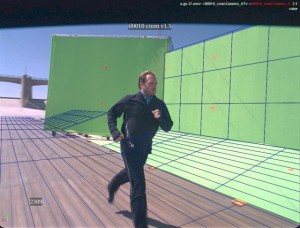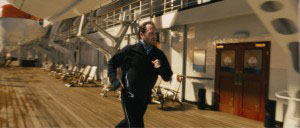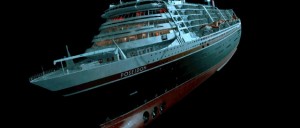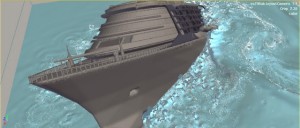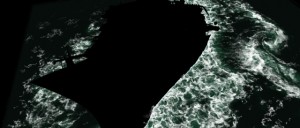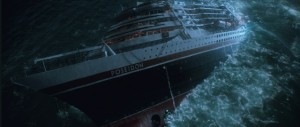 Industrial, Light & Magic (ILM) (a Lucasfilm Ltd. Company), credits mental ray®, the Academy Award® winning high-end rendering software from mental images®, for significant advances in virtual cinematography that ILM achieved in creating the visual effects for Poseidon, the blockbuster film released last week.
Industrial, Light & Magic (ILM) (a Lucasfilm Ltd. Company), credits mental ray®, the Academy Award® winning high-end rendering software from mental images®, for significant advances in virtual cinematography that ILM achieved in creating the visual effects for Poseidon, the blockbuster film released last week.
Known for its leading edge programmability and artistic control, mental ray was used to create the Poseidon, a vessel that would be 300 meters long and 70 meters wide in real life. Although no actor ever stepped foot on a physical ship, the advanced rendering capabilities of mental ray allowed ILM’s visual effects artists and engineers to generate the needed details and sophisticated lighting for the ship to fit seamlessly into the scenes.
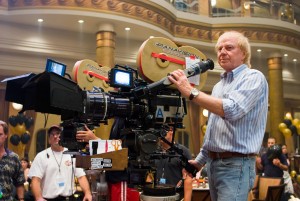
“The only way to achieve the level of photorealism that we needed to create Poseidon was through ray traced global illumination. We have ray traced using mental ray at ILM for many years and the level of complexity on Poseidon made it the obvious choice,” said Kim Libreri, ILM Visual Effects Supervisor on Poseidon. “We knew from day one that this would be the most difficult project to render and that mental ray was the best solution. Not only does the software create fantastic images but the level of support that we got from the mental images staff in Berlin and Los Angeles was amazing. Whenever we needed something they were there to deliver.”
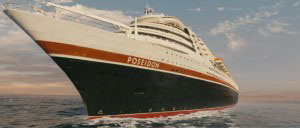 Mental Images’ California based support team worked closely with ILM artists and engineers on-site for weeks at a time to create new rendering techniques never before done. The core obstacle of the project was the enormous complexity. In order to create the realism, a modular system was built with mental ray that enabled the artists to repeatedly use virtual props. This allowed the artists to keep the scenes manageable while focusing on the various elements that came with the 6,500 virtual set pieces made up of over 180,000 individual pieces of geometry – from wine glasses, to clocks and newspapers and even the life preservers. A particular challenge was represented by the need to create an authentic opening scene. The shot had to be continuous which required close-up and far-away views of the ship. The scene needed to start underwater, breaking through the surface to show specific aerial views with a dramatic and apparent understanding of how enormous the scale of the ship in this story is.
Mental Images’ California based support team worked closely with ILM artists and engineers on-site for weeks at a time to create new rendering techniques never before done. The core obstacle of the project was the enormous complexity. In order to create the realism, a modular system was built with mental ray that enabled the artists to repeatedly use virtual props. This allowed the artists to keep the scenes manageable while focusing on the various elements that came with the 6,500 virtual set pieces made up of over 180,000 individual pieces of geometry – from wine glasses, to clocks and newspapers and even the life preservers. A particular challenge was represented by the need to create an authentic opening scene. The shot had to be continuous which required close-up and far-away views of the ship. The scene needed to start underwater, breaking through the surface to show specific aerial views with a dramatic and apparent understanding of how enormous the scale of the ship in this story is.
To achieve realistic and life-like effects ILM used mental ray to have complete control over lighting and design of the entire vessel. ILM worked closely with the mental images’ engineers to develop proprietary algorithms specifically designed for the project. One of the most difficult, but important challenges for the team was to create the natural light effects that would integrate the ship with the live actors. By utilizing the global illumination algorithms in mental ray the artists were able to create the lighting that makes the ship appear real to the human eye.
to around the yacht was CG.
|
The Film In this remake of the 1972 disaster classic ‘The Poseidon Adventure’ , a luxury ocean liner capsizes from a colossal tidal wave, leaving its survivors to fend for themselves as they find a way out, but done with a modern aesthetic and vastly greater visual effects resources than were possible 34 years ago. The film is directed by 65 year old Wolfgang Petersen of Troy, Perfect Storm and the landmark 1981 German classic Das Boot , clearly no stranger to filming ocean based dramas. The visual effects supervisor was Boyd Shermis ( Speed), who oversaw the implementation of more than 600 VFX shots. ILM was awarded approximately 100 of the most complex shots. the ILM team was headed by Kim Libreri (Matrix I,II and III) and associate visual effects supervisor Mohen Leo, who we talk to in this week’s podcast. Read more about the film production
|
“The entertainment industry is moving from emulation to genuine simulation, and realistic lighting and shading effects are the ultimate benchmark for the degree of realism that can be achieved by such simulation,” says Rolf Herken, CEO and CTO of mental images. “The decision of ILM to go with a full computer graphics approach for Poseidon was a great opportunity for us to demonstrate the unique capabilities and outstanding performance of mental ray. By working closely with ILM mental images continues to sharpen the cutting edge of such pursuits and keeps pushing the limits of the artistic use of simulation technology even further.”
|
About mental images mental images®, founded in 1986, is the recognized international leader in providing rendering software to the entertainment, computer-aided design, scientific visualization, architecture, and other industries that require sophisticated images. The company’s main product is the Academy Award® winning photorealistic rendering software mental ray® which runs on a wide variety of platforms ranging from networks of workstations to parallel supercomputers, producing images of unsurpassed realism. mental ray was initially released in 1989 and has since then been used in the production of several hundred major motion pictures. Leading visual effects companies and studios, such as Industrial Light and Magic and DreamWorks are among mental images’s largest customers. Additionally, in the CAD field mental ray is used by the world’s leading automobile and aircraft manufactures to accelerate the design of new products.
|

